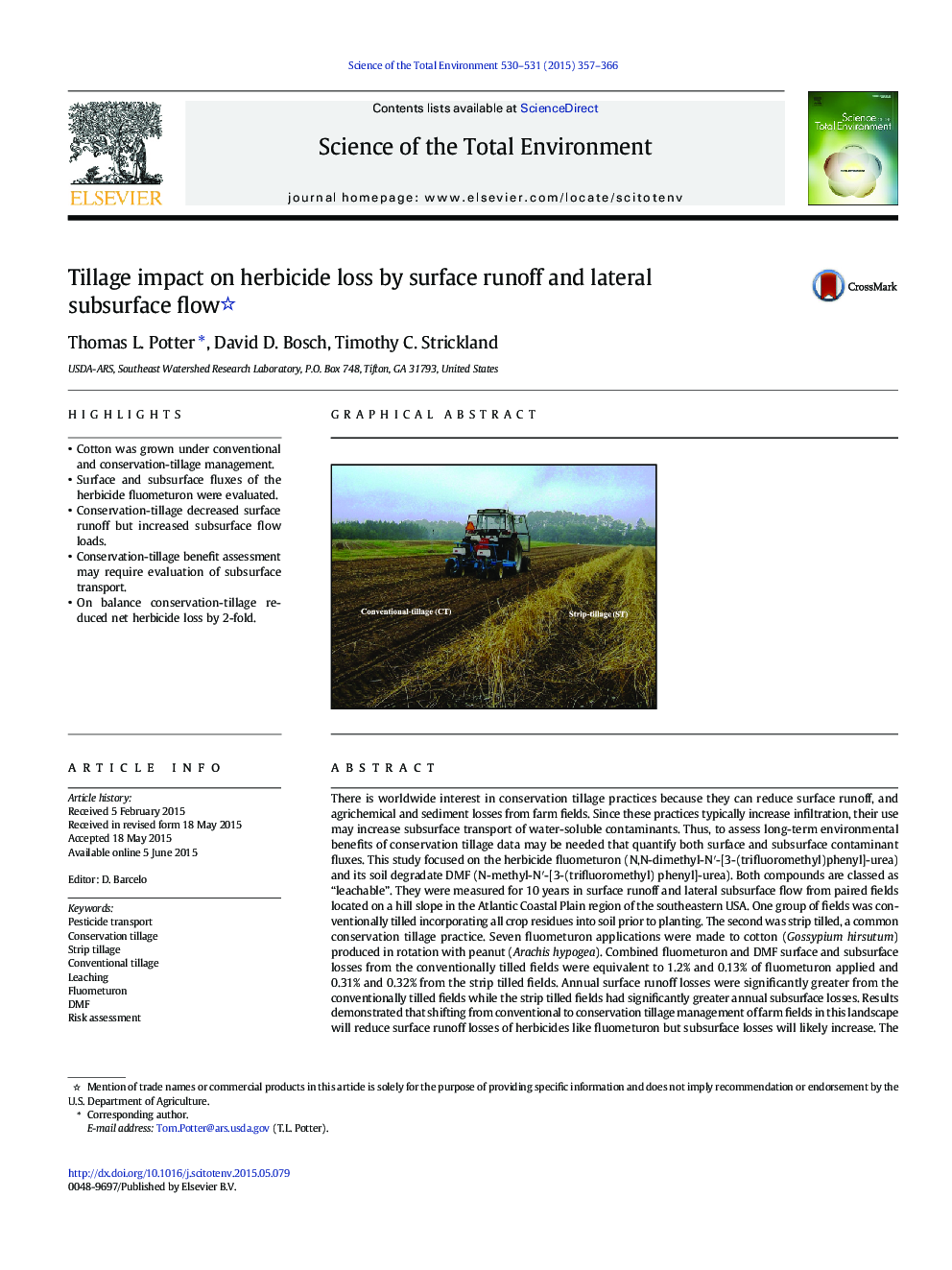| Article ID | Journal | Published Year | Pages | File Type |
|---|---|---|---|---|
| 6325631 | Science of The Total Environment | 2015 | 10 Pages |
â¢Cotton was grown under conventional and conservation-tillage management.â¢Surface and subsurface fluxes of the herbicide fluometuron were evaluated.â¢Conservation-tillage decreased surface runoff but increased subsurface flow loads.â¢Conservation-tillage benefit assessment may require evaluation of subsurface transport.â¢On balance conservation-tillage reduced net herbicide loss by 2-fold.
There is worldwide interest in conservation tillage practices because they can reduce surface runoff, and agrichemical and sediment losses from farm fields. Since these practices typically increase infiltration, their use may increase subsurface transport of water-soluble contaminants. Thus, to assess long-term environmental benefits of conservation tillage data may be needed that quantify both surface and subsurface contaminant fluxes. This study focused on the herbicide fluometuron (N,N-dimethyl-Nâ²-[3-(trifluoromethyl)phenyl]-urea) and its soil degradate DMF (N-methyl-Nâ²-[3-(trifluoromethyl) phenyl]-urea). Both compounds are classed as “leachable”. They were measured for 10Â years in surface runoff and lateral subsurface flow from paired fields located on a hill slope in the Atlantic Coastal Plain region of the southeastern USA. One group of fields was conventionally tilled incorporating all crop residues into soil prior to planting. The second was strip tilled, a common conservation tillage practice. Seven fluometuron applications were made to cotton (Gossypium hirsutum) produced in rotation with peanut (Arachis hypogea). Combined fluometuron and DMF surface and subsurface losses from the conventionally tilled fields were equivalent to 1.2% and 0.13% of fluometuron applied and 0.31% and 0.32% from the strip tilled fields. Annual surface runoff losses were significantly greater from the conventionally tilled fields while the strip tilled fields had significantly greater annual subsurface losses. Results demonstrated that shifting from conventional to conservation tillage management of farm fields in this landscape will reduce surface runoff losses of herbicides like fluometuron but subsurface losses will likely increase. The same trends can be expected in landscapes with similar soil and hydrologic properties. This should be considered when planning implementation of programs that promote conservation tillage use.
Graphical abstractDownload high-res image (399KB)Download full-size image
